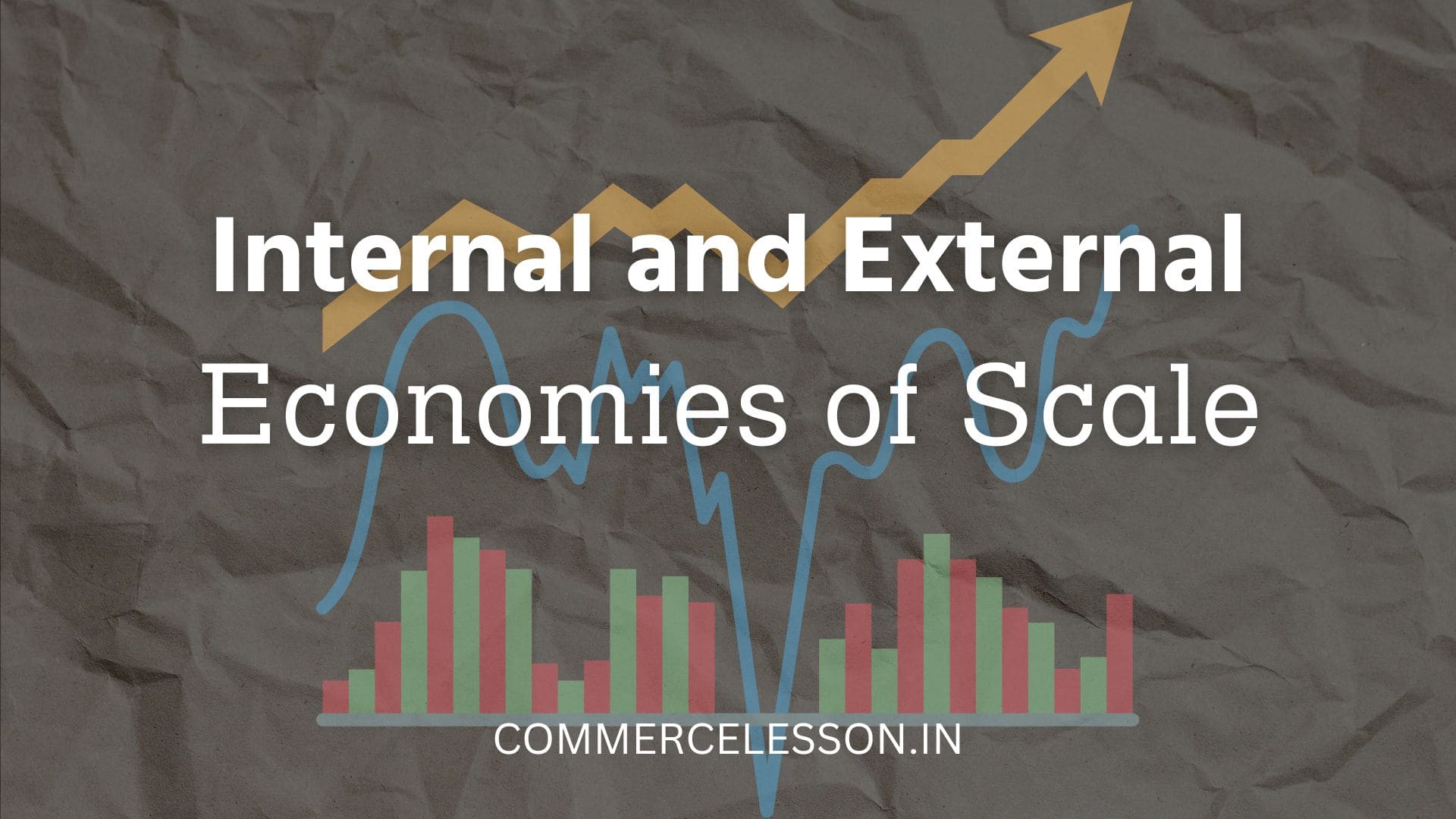Explain the concepts of internal and external economies arising out of large-scale production.
Economies of scale refer to the advantages of large-scale production or cost-reducing factors in the case of large-scale production. There are two types of economies of scale – 1. Internal economies of scale, 2. External economies of scale.
1. Internal Economies
(i) Technical economies:
The economies of scale which are associated with the use of machine technology are known as technical economies.
(ii) Marketing economies:
Marketing economies are those economies which are associated with the purchase and sale of materials or final products. When the firm produces on a large scale, the firm can purchase inputs at a large scale.
(iii) Financial economies:
Large firms can obtain finance from banks or other financial institutions at lower costs. These economies relating to financial transactions enjoyed by a firm on a large scale are known as financial economies.
(iv) Risk-spreading economies:
A large firm can produce several commodities. Hence, even if the demand for one commodity falls in the market, it can compensate the loss from the sale of other commodities produced by it. By spreading the risks among different products or among different markets the big firm can reduce total risk associated with the production process.
2. External Economies
(i) Economies of localisation:
When an industry expands, it is sometimes found that most of the firms of the industry are located within a region. This is known as localisation of industries. For example, cheap labour supply is available to that locality. Transport and communication facilities are developed which can be enjoyed by all the firms in the locality. These economies are known as economies of localisation.
(ii) Economies of information:
If there are different firms in an industry, they can co-operate with one another and exchange information among themselves. It becomes easier to disseminate information about cost conditions, availability of materials, market conditions, etc. This reduces the cost of collecting information from individual members. These economies are known as economies of information.
(iii) Economies of division of labour or specialisation:
Different firms in an industry can specialise in the production of different parts of the same product. As a result, each firm produces only a part of the total product. As a result, the total cost of production of the commodity becomes much lower. These economies are known as economies of division of labour or economies of specialisation.
Liked our post?
We are available with lots and lots of commerce-related content.





[…] Internal and External Economies of Scale […]
[…] Answer: Click here […]